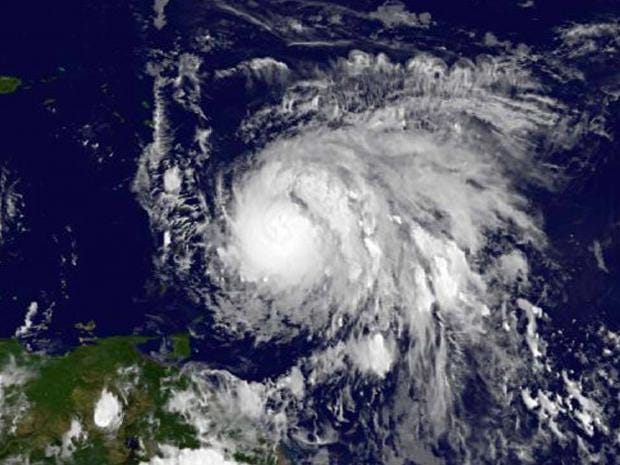
According to the National Hurricane Centre, Hurricane Maria has become ‘extremely dangerous’ category 5 storm and is moving through Caribbean Nasa.
Currently placed over the French Caribbean island of Martinique, it is blowing with a wind speed of 160 mph (257 km/h), it is predicted that it will strengthen over the next 24 to 36 hours.
Donald Trump has announced an emergency declaration for the US Virgin Islands. However, a forecast is made that it will move northwest, over Dominicia and the adjacent Leeward Islands. It will further proceed towards the Puerto Rico and Virgin Islands by Tuesday night.
Large destructive waves and life – threatening surf and rip tides at the centre of the hurricane might happen. Life-threatening floods and mudslides could hit the surrounding island.
A week before Virgin Islands was devastated by Hurricane Irma leading to landfall and killing dozens of people across the Caribbean causing 90 per cent damage to the buildings on several islands, leaving some areas without power.
The residents rued to see another storm coming and never expected that anyplace was ever hit by such a storm of high speed.
The storm is likely to pass over Barbuda and Antigua, the islands which were previously hit by Hurricane Irma. Around 100 hurricane recovery troops have been deployed by the National Guard in anticipation of the coming storm.
In 1928, Puerto Rico was hit by a hurricane so strong , the US territory was last hit by Hurricane Georges in 1998.
Puerto Rico received winds from the outer edges of Irma and around eighty-five per cent of the people in the metropolitan area of the capital, San Juan was left powerless.
State officials have come up with more than 400 shelters and warned the residents of flood-prone areas to evacuate. In anticipation of Maria, the country is forced to ration basic supplies.
The Federal Emergency Management Agency (Fema) moved to coordinate the disaster relief efforts after the President’s emergency declaration.